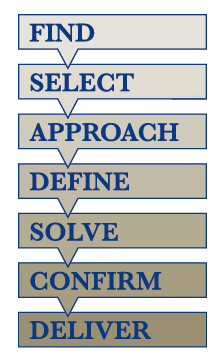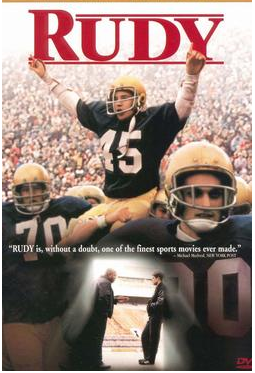 In the B2B sales process, the gatekeeper is typically a receptionist or an executive assistant or a designated person who is trained and responsible for keeping a prospect from being bothered by irrelevant callers.
In the B2B sales process, the gatekeeper is typically a receptionist or an executive assistant or a designated person who is trained and responsible for keeping a prospect from being bothered by irrelevant callers.
by Jeff Roth, on February 19, 2015
 In the B2B sales process, the gatekeeper is typically a receptionist or an executive assistant or a designated person who is trained and responsible for keeping a prospect from being bothered by irrelevant callers.
In the B2B sales process, the gatekeeper is typically a receptionist or an executive assistant or a designated person who is trained and responsible for keeping a prospect from being bothered by irrelevant callers.
by Jeff Roth, on November 5, 2014
 Let’s face it: Colleges and universities are not accustomed to hiring salespeople. They hire educators, administrators, technicians of various sorts, and clerical staff of nearly every type. But they don’t hire great salespeople or what they call “Business Developers.” And yet, increasingly these institutions find themselves hiring people who are setting appointments, providing need assessments, solving problems and delivering customized solutions that are addressing the business challenges of rapidly changing technology, employee performance and customer satisfaction.
Let’s face it: Colleges and universities are not accustomed to hiring salespeople. They hire educators, administrators, technicians of various sorts, and clerical staff of nearly every type. But they don’t hire great salespeople or what they call “Business Developers.” And yet, increasingly these institutions find themselves hiring people who are setting appointments, providing need assessments, solving problems and delivering customized solutions that are addressing the business challenges of rapidly changing technology, employee performance and customer satisfaction.
Hiring salespeople is different. Of course, they need the qualities you look for in every hire—integrity, intelligence, focus, energy, and readiness to execute. But business-to-business salespeople also need at least these four additional traits as well.
Successful salespeople identify with their customers and pick up on their feelings. They understand their needs and pressures they’re under; they get how business works and can wrap their heads around the challenges faced by each prospect. Yes, they represent the college and its specific B2B offerings, and yes they want to drive revenue for the institution. But the best ones—the ones you want—are geniuses at balancing the interests of the college and the interests of the customer as they assemble a tailored solution.
by Jeff Roth, on July 22, 2014
 Like you, I get a ton of emails in a typical day. If I read them all, I’d get little else done. So if I don’t see something in the subject line that grabs my attention because it’s relevant to me, that message is gone! That takes care of 50% of the email crowding my Inbox. If I do actually start reading, but there’s nothing intriguing in the first few sentences, there goes another 30% of the daily onslaught. Another 10% or so is internal mail, and my boss reads this blog, so I’m saying for the record that I read those. Which brings us to that last 10% of email, items I may actually read.
Like you, I get a ton of emails in a typical day. If I read them all, I’d get little else done. So if I don’t see something in the subject line that grabs my attention because it’s relevant to me, that message is gone! That takes care of 50% of the email crowding my Inbox. If I do actually start reading, but there’s nothing intriguing in the first few sentences, there goes another 30% of the daily onslaught. Another 10% or so is internal mail, and my boss reads this blog, so I’m saying for the record that I read those. Which brings us to that last 10% of email, items I may actually read.
How can you be included in my 10%? Or the 10% of the other strangers you’re trying to reach? Make it stand out. Be intriguing and, include a call to action, and keep it short. Sounds simple, right? Try it. You’ll find it’s much harder than you think. Below are 10 message goals that fit into two concise paragraphs and will keep your email message “above the fold,” giving it a good chance of capturing the reader:
by Jeff Roth, on March 19, 2014
 It’s an interesting fact in business that the people at the top don’t always know best. In fact, most of the time, the person who has the skills and experience to offer a solution to a particular customer is the salesperson.
It’s an interesting fact in business that the people at the top don’t always know best. In fact, most of the time, the person who has the skills and experience to offer a solution to a particular customer is the salesperson.
A few years ago, I was negotiating a very large sale that involved complex discussions and choices to be finalized in order to send out a proposal. The standard sales cycle at our company closed in about three months, on average, and I was working with a decision maker to finalize the proposal.
by Jeff Roth, on August 15, 2013
 I was in a department store looking at big screen TVs and the sales representative approached me and asked if he could help me with something. I told him I was just browsing (but I was really interested in buying).
I was in a department store looking at big screen TVs and the sales representative approached me and asked if he could help me with something. I told him I was just browsing (but I was really interested in buying).
by Jeff Roth, on February 18, 2013
 Take a moment and think of times you were up-sold in the past. It happens so frequently, that you don’t even realize it. I wanted to order flowers on a website, another screen popped up and I ordered chocolates and I received free shipping… I went to the auto repair shop specifically for an oil change and added two additional repairs that my service clerk recommended… As a sales strategy, is this a bad thing or a good thing?
Take a moment and think of times you were up-sold in the past. It happens so frequently, that you don’t even realize it. I wanted to order flowers on a website, another screen popped up and I ordered chocolates and I received free shipping… I went to the auto repair shop specifically for an oil change and added two additional repairs that my service clerk recommended… As a sales strategy, is this a bad thing or a good thing?
by Jeff Roth, on February 14, 2013
 Who are the prospects waiting for you? Before we get started on our journey to find that special someone, we need to define a “prospect” from a “suspect.” In my readings, the best definition I’ve found is:
Who are the prospects waiting for you? Before we get started on our journey to find that special someone, we need to define a “prospect” from a “suspect.” In my readings, the best definition I’ve found is:
by Jeff Roth, on January 1, 2013
 Happy New Year! In 2012, our Appointment Lab has learned that setting appointments for our clients involves clear organizational planning and preparation in targeting the ideal customer.
Happy New Year! In 2012, our Appointment Lab has learned that setting appointments for our clients involves clear organizational planning and preparation in targeting the ideal customer.
by Jeff Roth, on November 30, 2012
 Over the weekend I saw "Rudy," one of the most inspiring movies in sports. For those of you that have not seen Rudy, it’s all about a person’s passion and persistence to accomplish a dream.
Over the weekend I saw "Rudy," one of the most inspiring movies in sports. For those of you that have not seen Rudy, it’s all about a person’s passion and persistence to accomplish a dream.
by Jeff Roth, on August 29, 2012
 Do you think it has become more difficult to set sales appointments in today’s business climate? How hard is it for you to reach decision-makers? How many sales calls does it take you to schedule one appointment? How much time and effort do you put into preparing for a sales call? How persistent are you in following up on the sales call?
Do you think it has become more difficult to set sales appointments in today’s business climate? How hard is it for you to reach decision-makers? How many sales calls does it take you to schedule one appointment? How much time and effort do you put into preparing for a sales call? How persistent are you in following up on the sales call?
Improve your sales performance. Sales managers can gain unique perpsectives on hiring and developing more effective sales teams. Salespeople can improve their approach to getting more appointments with target prospects, uncovering desired business results, and engaging clients in a collaborative process that leads to the sale.
The Center for Sales Strategy
Contact Us
